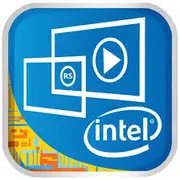Intel Core m5-6Y57

Intel Core m5-6Y57: モバイル性のための適度なパワー。プロセッサー分析、数年後
2025年4月
はじめに
2015年に発売されたIntel Core m5-6Y57プロセッサーは、超薄型ノートパソコンの時代の一部となり、パフォーマンスとエネルギー効率のバランスが重要視されました。10年経った今でも、このプラットフォームのデバイスは特に中古市場で使用されています。2025年においてこのチップがどれほど relevancy であるか、誰に適しているか、そしてどのような妥協が伴うのかを分析します。
アーキテクチャとプロセス:古くなったベースだが、考え抜かれたデザイン
コア、スレッド、クロック周波数
Core m5-6Y57はSkylakeアーキテクチャ(Intelの第6世代)上に構築され、14nmプロセスで製造されています。これは、2コアでHyper-Threading(4スレッド)をサポートするプロセッサーです。基本クロック速度は1.1GHzで、ターボモードで最大2.8GHzまでオーバークロック可能です。この時代においては、ミニチュア化の一歩前進でしたが、現在ではApple M3やIntel Meteor Lakeの5nmチップの前では控えめに見えます。
統合グラフィックス
Intel HD Graphics 515は、24の実行ユニットと900MHzまでのクロック速度を持つ内蔵GPUです。DisplayPortやHDMIを介して4Kビデオをサポートし、HEVCのハードウェアデコーディングも備えており、2025年でもメディアタスクにはまだ便利です。しかし、ゲームやグラフィックスの作業には能力が不足しており、例えばCS:GOでは低設定でも30FPSに達するのがやっとです。
エネルギー消費とTDP:最大の強み
4.5WのTDPはこのプロセッサーの主要な特徴です。これにより、アクティブ冷却なしでノートパソコン(たとえば、2015年のMacBook 12インチ)を設計でき、完全に無音を実現しました。対照的に、現代のIntel Core Uシリーズは15WのTDPを持ち、Apple M1は10〜20Wで、はるかに高い性能を提供しています。
しかし、低いTDPは性能を制限します。長時間の負荷中は、特にコンパクトな筐体の場合、過熱によってクロック速度が低下します。
パフォーマンス:基本的なタスク用のみ
オフィス作業とマルチメディア
- Geekbench 6: 760(シングルコア)、1298(マルチコア)。2025年においては平均以下です。例えば、予算向けのIntel N100(2023)は約1100/3500をスコアします。
- 実際のシナリオ:
- 10以上のタブでのウェブサーフィン — 一時的なラグが発生する可能性があります。
- 4Kビデオ — ハードウェアデコーディングのおかげでスムーズに再生可能です。
- Microsoft Office、Zoom — 安定して動作しますが、バックグラウンドでのファイル変換やプレゼンテーションのレンダリングには時間がかかります。
ゲーム
- 軽いゲーム(Stardew Valley、Minecraft) — 低設定で40〜50FPS。
- クラウドゲーミング(GeForce NOW、Xbox Cloud) — インターネットが安定していれば最適な選択肢です。
ターボモード:短時間のブースト
短期間の負荷(アプリを開く、PDFをレンダリングする)中、このプロセッサーは2.8GHzに加速しますが、10〜15秒後には基本的なクロック周波数に戻ります。クーラーがない薄型ノートパソコンでは、本体が迅速に加熱します。
使用シナリオ:2025年に誰に適しているか?
1. 学生 — ノートを取り、オンラインコースを受講し、PDFに取り組むため。
2. 旅行者 — 8〜10時間のバッテリー持続時間を持つコンパクトなデバイス。
3. サブPC — 旅行用のバックアップデバイスとして。
4. オフィスタスク — 「重い」Excelやグラフ作成が不要な場合。
不向き:
- PhotoshopやDaVinci Resolveで作業するフリーランサー。
- ゲーマー(クラウドサービスを除く)。
バッテリー寿命:過去の利点
Core m5-6Y57を搭載したノートパソコンの平均的な動作時間は、適度な負荷(画面の明るさは50%、Wi-Fi使用)で8〜10時間です。これに貢献しているのは:
- Speed Shift技術 — 負荷に応じたクロック速度の迅速な適応。
- 省エネモード — 使用していないコンポーネントの無効化。
しかし、現代のプロセッサー(例えば、Snapdragon X Elite)は、同様のバッテリー持続時間で2倍のパフォーマンスを提供します。
競合との比較
- Intel Core i5-1135G7(2020): TDP 15W、4コア、8スレッド。Geekbench 6では1500/4500。中古のノートパソコンの価格は$300〜400。
- AMD Ryzen 3 7320U(2022): 4コア、TDP 15W、Zen 2。スコアは1200/3500。新しいデバイスは$500から。
- Apple M1(2020): シングルコアで2300、マルチコアで8000。中古市場でのMacBook Air M1は$600〜700。
結論: Core m5-6Y57は2020年代の基本モデルにも劣りますが、価格面での優位性があります(中古のウルトラブックは$150〜250)。
長所と短所
強み:
- パッシブ冷却(静かな動作)。
- 2025年でも基本的なタスクには十分。
- 中古市場での低コスト。
弱み:
- 低いマルチスレッド性能。
- 現代の標準(Wi-Fi 6、Thunderbolt 4)への対応不足。
- 限定的なアップグレード:RAMやSSDはたいていはハンダ付けされています。
ノートパソコンの選び方に関する推奨事項
2025年にCore m5-6Y57を搭載したデバイスを検討している場合は、以下に注意してください:
1. デバイスの種類: 2015〜2017年のウルトラブック(例:Dell XPS 13 9350、Lenovo Yoga 900)。
2. ディスプレイ: 4KよりもFull HDが望ましい(GPUへの負担が少ない)。
3. SSD: 容量は256GB以上、NVMeタイプは作業を加速します。
4. ポート: 充電をサポートするUSB-Cは、汎用性に役立ちます。
アドバイス: バッテリーの状態を確認してください。8〜10年の間にその容量は40〜50%減少している可能性があります。
最終的な結論
2025年においてIntel Core m5-6Y57は、以下のような人々に向いています:
- インターネットやオフィス用の低価格($200まで)のノートパソコンを探している人。
- 静かさとコンパクトさを重視する人。
- 「重い」アプリケーションを使用する予定がない人。
主な利点: ミニマリズム、バッテリー寿命、手の届く価格。しかし、将来的なアップグレードや専門的なタスクには、予算カテゴリーの中でもより現代的な解決策を考慮した方が良いでしょう。
基本
CPUの仕様
メモリ仕様
GPUの仕様
その他
ベンチマーク
他のCPUとの比較
ソーシャルメディアで共有する
または当サイトへのリンクを追加
<a href="https://cputronic.com/ja/cpu/intel-core-m5-6y57" target="_blank">Intel Core m5-6Y57</a>